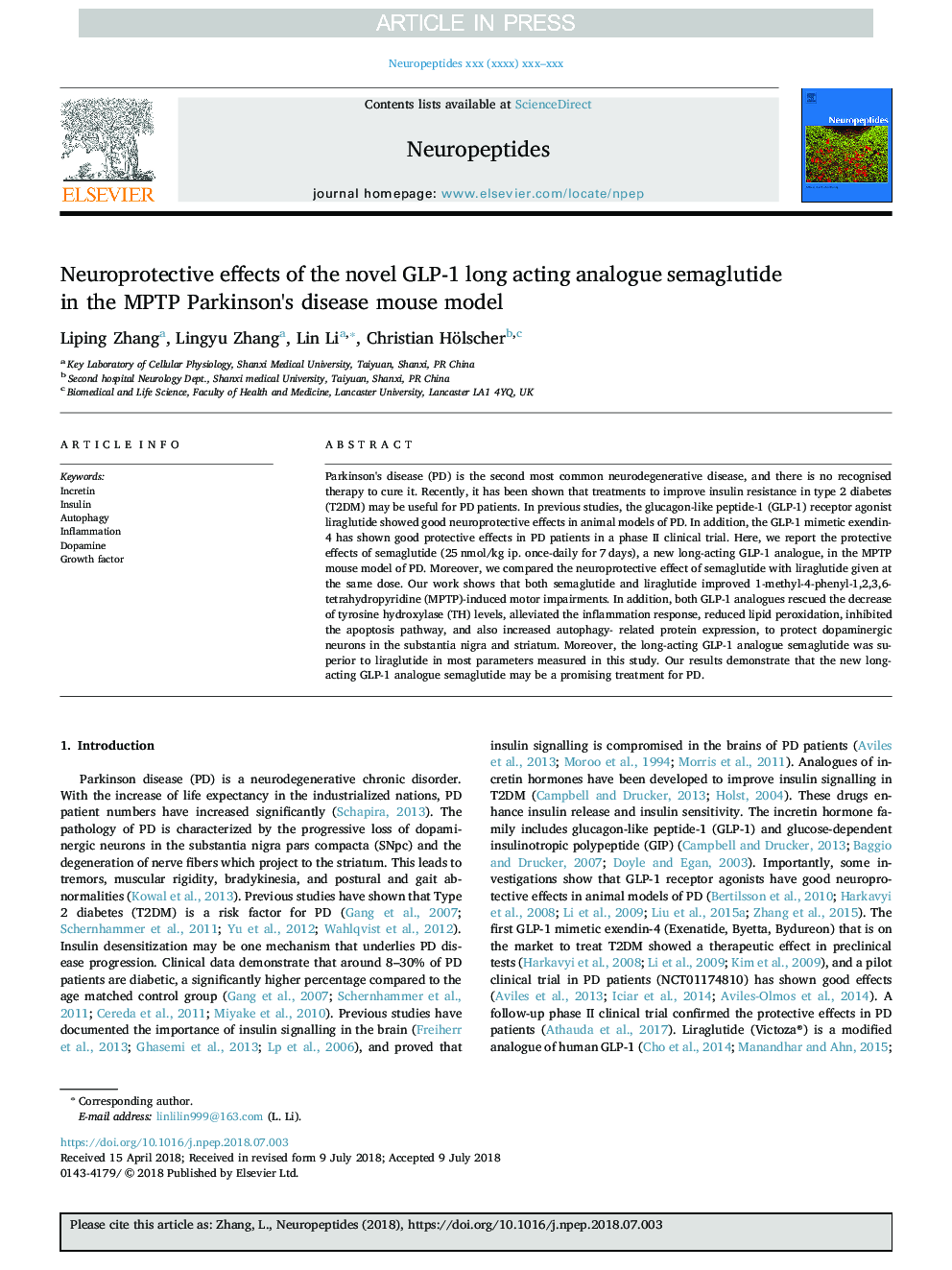| Article ID | Journal | Published Year | Pages | File Type |
|---|---|---|---|---|
| 10212320 | Neuropeptides | 2018 | 11 Pages |
Abstract
Parkinson's disease (PD) is the second most common neurodegenerative disease, and there is no recognised therapy to cure it. Recently, it has been shown that treatments to improve insulin resistance in type 2 diabetes (T2DM) may be useful for PD patients. In previous studies, the glucagon-like peptide-1 (GLP-1) receptor agonist liraglutide showed good neuroprotective effects in animal models of PD. In addition, the GLP-1 mimetic exendin-4 has shown good protective effects in PD patients in a phase II clinical trial. Here, we report the protective effects of semaglutide (25â¯nmol/kg ip. once-daily for 7â¯days), a new long-acting GLP-1 analogue, in the MPTP mouse model of PD. Moreover, we compared the neuroprotective effect of semaglutide with liraglutide given at the same dose. Our work shows that both semaglutide and liraglutide improved 1-methyl-4-phenyl-1,2,3,6-tetrahydropyridine (MPTP)-induced motor impairments. In addition, both GLP-1 analogues rescued the decrease of tyrosine hydroxylase (TH) levels, alleviated the inflammation response, reduced lipid peroxidation, inhibited the apoptosis pathway, and also increased autophagy- related protein expression, to protect dopaminergic neurons in the substantia nigra and striatum. Moreover, the long-acting GLP-1 analogue semaglutide was superior to liraglutide in most parameters measured in this study. Our results demonstrate that the new long- acting GLP-1 analogue semaglutide may be a promising treatment for PD.
Related Topics
Life Sciences
Biochemistry, Genetics and Molecular Biology
Endocrinology
Authors
Liping Zhang, Lingyu Zhang, Lin Li, Christian Hölscher,
